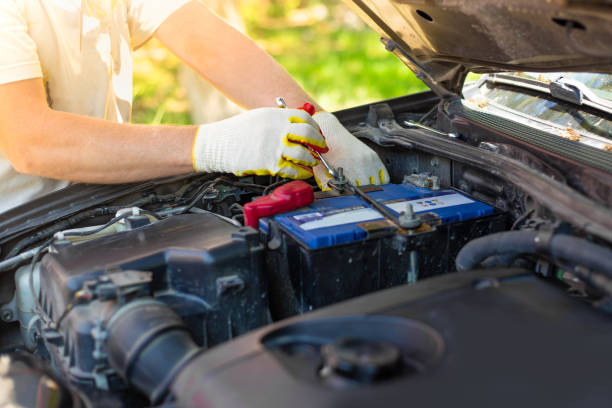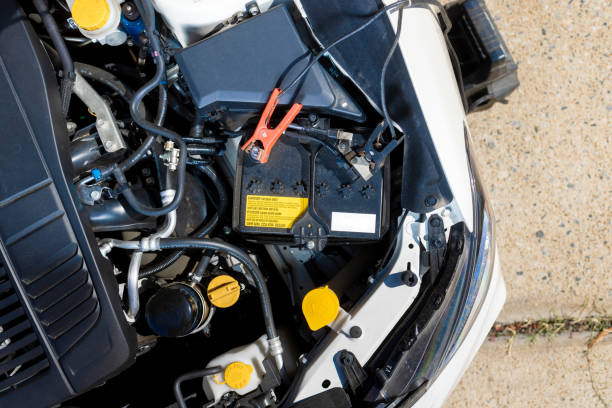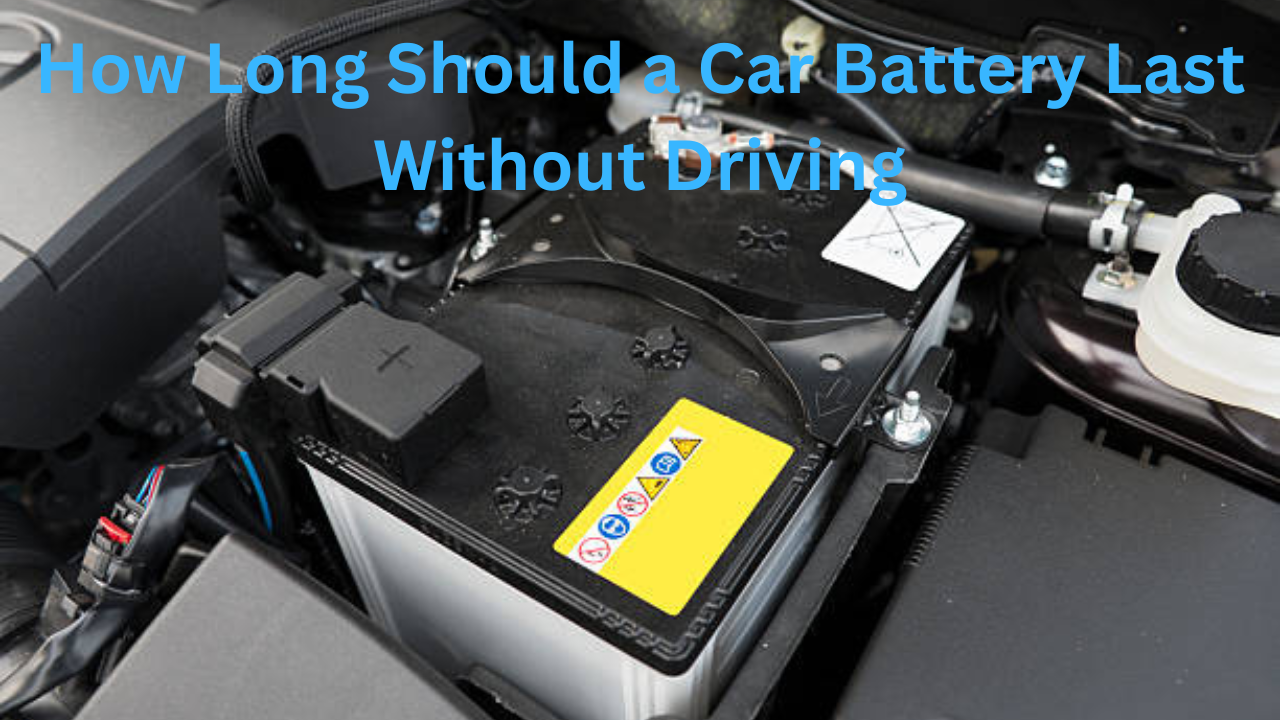A Car Battery Last Without Driving can typically last about two to three weeks without being driven. Having a car battery that lasts is crucial for the proper functioning of your vehicle.
It supplies energy to the ignition system, starter motor, and other electrical parts. However, if your car sits idle for an extended period without being driven, the battery can gradually lose its charge.
This can happen due to self-discharge and parasitic drain from the electrical systems that consume electricity even when the vehicle is not moving.
While each battery’s lifespan may vary depending on factors like weather conditions and battery quality, it is generally recommended to drive your car regularly to keep the battery charged and in good condition.
We will explore how long an automobile battery can survive while not in use and discuss some essential tips for maintaining your battery’s longevity.
Factors Affecting Car Battery Life
When it comes to car battery life, several factors can affect how long your battery will last without driving. These factors include weather conditions, usage patterns, and battery quality. In this section, we will explore each of these factors in detail.
Weather Conditions
Weather circumstances can significantly affect the lifespan of your car battery. Extreme temperatures, whether hot or cold, can cause your battery to work harder and degrade more quickly.
Hot weather can cause the evaporation of fluid and internal corrosion. In contrast, cold weather can reduce your battery’s ability to hold a charge. It is important to note that both very high and very low temperatures can present challenges for the battery.
Usage Patterns
Your usage patterns also play a role in how long you can go without driving your car’s battery. If you frequently take short trips or use your vehicle infrequently, your battery may need more time to recharge fully.
This can lead to a rundown battery and reduced overall lifespan. On the other hand, consistent driving and longer trips can help to keep your battery charged and in good condition.
Battery Quality
The quality of your car battery is another crucial factor to consider when assessing its lifespan. Higher-quality batteries are typically made with better materials and construction, which can result in a longer lifespan.
Investing in a reliable and reputable battery brand can assist in making sure your battery will last longer without driving.
Additionally, proper maintenance and care can also make a difference in extending The life of your battery. Keeping your battery terminals rust-free and clean, avoiding overcharging, and using battery maintainers when necessary can all help to prolong their lifespan.

Typical Lifespan Of A Car Battery
When it comes to the lifespan of a car battery, there are a few factors to consider. The typical A car battery’s lifespan can vary based on several factors, including the type of battery, weather conditions, driving habits, and maintenance. It’s important to understand these factors to ensure that you are giving your car battery the proper care it needs.
Manufacturer Recommendations
Car battery manufacturers often provide their recommendations on how long their batteries should last. These recommendations can typically be found in the owner’s manual or on the manufacturer’s website.
It’s essential to follow these recommendations as closely as possible to extend the life of the battery in your car. Most manufacturers recommend replacing a car battery replacement every three to five years. However, this can change based on usage and maintenance.
Average Lifespan
The typical life of an automobile battery is typically around 4 to 6 years. However, this is just an estimate, and the actual lifespan can vary. Several factors can affect the duration of a car battery, such as the climate you live in, the driving conditions you encounter, and how often you use your vehicle.
Extreme temperatures, both hot and cold, can have a significant impact on the lifespan of a car battery. In colder climates, the battery can struggle to start the engine. In comparison, in hotter climates, the heat can cause the battery to degrade faster.
Signs Of A Failing Battery
It’s essential to recognize the warning indicators that your car’s battery may be failing. These signs can indicate that your battery has to be changed before it completely dies and leaves you stranded. Some common signs of a failing battery include:
- Difficulty starting the engine or the engine cranking slowly
- Dim headlights or interior lights
- Electrical issues, such as the radio or power windows not working properly
- A battery warning light on the dashboard
- A bloated or swollen battery case
- An unpleasant smell coming from the battery
If you experience any of these symptoms, it’s crucial to have a professional check of your battery. They will be able to determine if your battery needs to be replaced or if any other underlying issues are causing the problems.
Tips To Extend Car Battery Life
A car battery is a necessary part of your vehicle, providing electricity to start the engine, run the lights, and power other electrical systems. However, car batteries can lose their charge over time, primarily if the vehicle is not driven frequently.
To prevent premature battery failure and ensure your car starts reliably, follow these tips to extend the life of your car battery:
Regular Maintenance
Frequent upkeep is essential to maintaining your car battery in optimal condition. Here are a few maintenance tips to follow:
- Inspect and clean the battery terminals: Over time, battery terminals can become corroded, leading to a poor connection. Inspect the terminals regularly and clean any corrosion using a mixture of baking soda and water.
- Tighten loose connections: Loose connections can cause electrical resistance and drain the battery. Ensure all connections are tight and secure.
- Check the battery’s water level: If you have a conventional lead-acid battery, check the water level regularly and top it up if necessary. Be cautious not to overfill.
- Test your battery: If you notice any signs of a weak battery, such as slow cranking or dimming lights, have your battery tested by a professional mechanic.
Avoiding Excessive Drain
Excessive drain on your car battery’s lifespan can be greatly shortened. Follow these tips to prevent unnecessary drain:
- Avoid leaving lights and accessories on: Be mindful of putting your headlights, interior lights, or other accessories on when the engine is not running. These can drain the battery quickly.
- Unplug devices: If you use electronic devices or chargers in your car, remember to unplug them when not in use. Leaving them plugged in can draw power from the battery even when the ignition is off.
- Avoid brief excursions: The battery cannot fully charge if you make short trips frequently, leading to a gradual loss of charge over time. Whenever possible, combine errands and take longer drives to optimize your battery’s performance.
Proper Storage
Proper storage is essential, particularly if you intend to leave your car unattended for a long time. Here are some tips for storing your car battery:
- Disconnect the battery: When keeping your car in storage for a long time, it’s a good idea to disconnect the battery to prevent any slowly draining devices from depleting the charge.
- Please keep it in a cool, dry place: Keep your batteries out of direct sunlight and in a dry, cold place. The performance of the battery can be impacted by extreme heat or cold and lifespan.
- Use a trickle charger or battery maintainer: Take into consideration utilizing one of these when storing your vehicle. These devices provide a slow, steady charge to maintain the battery at its best level during the storage period.
By using these suggestions, you can increase the longevity of your vehicle’s battery and reduce the likelihood of unexpected breakdowns.
Effects Of Long-term Inactivity On Car Battery
Long-term inactivity can negatively impact car batteries, causing them to deteriorate faster. Without regular driving, a car battery may only last around 2-3 years before needing a replacement. It is important to maintain the battery’s health by driving the vehicle regularly or using a battery maintainer.
Battery Drainage
Long periods of inactivity can have a significant impact on the lifespan of a car battery. When a vehicle is not driven for an extended period, the battery begins to lose charge. This drain occurs due to various factors, such as the car’s electrical system, which continues to draw a small amount of power even when the vehicle is not in use. Additionally, certain features like clocks, alarms, and remote keyless entry systems can contribute to battery drainage over time.
In colder climates, the effects of battery drainage are even more pronounced, as low temperatures can further diminish the battery’s energy storage capacity. This is because cold weather negatively affects the chemical reactions within the battery, making it more difficult to generate and maintain a charge. As a result, prolonged inactivity during the winter months can lead to a faster depletion of battery power.
Sulfation
One of the most common issues that arise from long-term inactivity is sulfation. Sulfation is a chemical reaction that occurs when lead-acid batteries are allowed to sit in a discharged condition for a long time. This results in the formation of sulfate crystals on the battery plates, inhibiting the battery’s ability to hold a charge.
Sulfation can irreversibly damage a car battery if left unchecked for long periods. These sulfate crystals act as an insulator, preventing the battery from effectively storing and delivering electrical energy. If the sulfation is severe enough, the battery may need to be replaced altogether.
Recovery Methods
Fortunately, there are several methods available to help recover a car battery that has suffered from long-term inactivity and sulfation:
- Battery Charging: One of the simplest and most effective methods to revive a depleted battery is by using a battery charger. Charging the battery at a low and steady rate can help dissolve the sulfate crystals, restoring the battery’s capacity and extending its lifespan.
- Desulfation: Desulfation is a process that utilizes specialized equipment, such as a pulse charger or desulfator, to break down and remove the sulfate crystals from the battery plates. This method can be highly effective in rejuvenating batteries that have suffered from severe sulfation.
- Regular Maintenance: To prevent the negative effects of long-term inactivity, it is essential to perform routine maintenance on your car battery. This includes normal usage or periodic charging, especially during extended periods of vehicle inactivity.
- Ensuring Proper Storage: When storing a vehicle for an extended period, it’s important to take certain steps to maintain the battery’s health. This can include disconnecting the battery, using a battery tender, or maintaining a suitable storage temperature to minimize the impact of inactivity and sulfation.
When To Replace A Car Battery
Knowing when to change the battery in your car is essential for preventing unexpected breakdowns and ensuring the smooth operation of your vehicle.
While Automobile batteries have a lifespan of several years, they do have a finite lifespan. Factors such as battery health, age, and mileage play a significant role in determining when it’s time for a replacement.
Testing The Battery Health
Regularly testing the health of the battery in your vehicle is an effective way to assess whether it requires replacement. There are several techniques you can employ to determine the condition of your battery:
- Testing voltage: Checking the battery voltage can give you a sense of its state of charge. A poor battery is indicated by a voltage reading less than 12.2 volts and may require replacement.
- Load testing: This involves using a device to apply a load to the battery while monitoring how well it holds up. If the battery cannot maintain a steady voltage under load, Maybe a new one is in order.
- Hydrometer test: This test involves determining the electrolyte’s specific gravity in the battery to assess its condition of charge. Low specific gravity values could be a sign of a failing battery.
Age And Mileage Considerations
While some car batteries can last up to six years or more, age and mileage are important factors to consider when determining if it’s time for a replacement:
- Battery most car batteries: Have an age label that indicates the manufacturing date. On average, a battery can last between three and five years. If your car battery is approaching or exceeding this middle age, it may be wise to consider replacing it.
- Mileage: The number of miles driven also impacts the lifespan of a car battery. Frequent short trips or driving in extreme weather conditions can drain the battery faster. If you notice decreased performance or frequent jump-starts, it may be time to replace your battery.
Professional Evaluation
In some cases, it’s best to seek professional evaluation to determine the condition of the car battery. Experienced mechanics have the knowledge and diagnostic instruments that precisely evaluate your battery’s condition and suggest the best line of action. They can bring comfort and ensure that you’re making an informed decision regarding battery replacement.
In conclusion, regularly testing the battery’s health, considering age and mileage, and seeking professional evaluation can help you determine when your car’s battery needs to be changed.
By staying proactive and taking the necessary steps to maintain your battery’s health, You can keep your car in good working order and avoid unplanned repairs.

How Long Can A Car Battery Be Dead And Still Be Recharged
The ability how to revive a dead vehicle battery depends on various factors, including the type of battery, the extent of discharge, and the overall condition of the battery.
In general, a lead-acid battery, which is commonly used in cars, can be recharged after being dead for a relatively short period, such as a few days to a week.
Suppose a car battery has been fully discharged and left in a lifeless state for a long time, such as several weeks or months. In that case, its capacity to store energy may be compromised.
Additionally, repeatedly allowing a lead-acid battery to become fully discharged can shorten its overall lifespan.
It’s important to note that some modern cars with advanced electronic systems may experience issues or lose specific settings if the battery is entirely dead for an extended amount of time.
In such cases, a jump start or external power source may be needed to provide enough energy for the vehicle’s electronics to function correctly.
If you find yourself with a dead car battery, it’s advisable to recharge it as soon as possible. Using a battery charger or jump-starting the vehicle can help bring the battery back to life. If the battery continues to have problems holding a charge, it may need to be replaced.
Frequently Asked Questions On How Long Should A Car Battery Last Without Driving
How Long Does A Car Battery Last If You Don’t Drive It?
The lifespan of an automobile battery is one to two months when not driven. The duration may vary depending on factors like temperature and battery quality. It’s important to start the car periodically to keep the battery charged and in good condition.
How Long Can A Car Battery Sit Unused?
A car battery may remain unutilized for about 1-2 months before losing its charge. It’s best to start the engine every few weeks to prevent it from dying.
How Do You Keep A Car Battery From Dying When Not In Use?
To prevent a car battery from dying when not in use, disconnect the battery or use a trickle charger. Keeping the battery clean and storing the car in a garage can also help. Regularly starting the vehicle, avoiding excess electrical use, and checking for any parasitic draw can prolong the battery life.
What Drains A Car Battery While It Is Off?
Several things can drain a car battery when it is off, such as leaving lights or accessories on, a faulty electrical component, or a parasitic draw. Regular maintenance and checking for any issues can help prevent battery drainage.
Conclusion
From the information provided, it is evident that a car battery’s longevity without driving largely depends on various factors such as temperature and maintenance. While a car can typically sit idle for a couple of weeks without any issues, it is advisable to start and run the vehicle periodically to keep the battery in good condition.
By taking proper care and following the recommendations of the manufacturer, Your automobile battery’s lifespan can be greatly increased.

I am Nishadujjaman.I have two years of experience all types of battery like tesla battery,car battery etc. So I work on solving these issues and give various tips on these issues.
